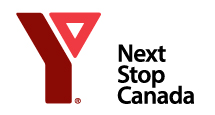Congratulations and welcome! Soon you will be starting a new life in Canada, and while this might be exciting, it can also be a little scary. Moving to a new country requires patience as you deal with all the changes you will encounter, especially when it comes to managing your money and finances.
Download our free guidebook for Newcomers: Newcomers and Money 101.

Step 1: Open a Bank Account
One of the first things you will need to do once you arrive is open a bank account. It’s important to know that Canada has a good, strong financial system that is secure. Up to $100,000 of the money you put into a Canadian bank account is protected by the government in case of a bank failure. Your money will be safe.
Consider choosing a bank that is close to where you live or work. Although you may do most of your banking online, there may be times when you need to go into a local branch to speak with someone or do a specific transaction. You can research online to see what banks best meet your needs. There may be some banks that offer special services to newcomers.
Once you’ve decided which bank you would like to open a bank account with, contact the bank to learn what their identification requirements are to open a bank account as a newcomer.

Step 2: Create a Budget or Spending Plan
It is very important to establish a budget or spending plan. This is necessary whether you are new to Canada or have lived here your entire life. We all need to know where, when and how we are spending our money in order to avoid financial difficulties.
By being organized, you gain control over your money. You can use our free Budget Planner + Expense Tracker to help keep your expenses organized.

Step 3: Set Your Financial Goals
It’s a good idea to establish short, medium, and long-term financial goals. Short-term goals are typically meant to be achieved within a year, medium-term goals between one and five years, and long-term financial goals are those you expect to work towards for over five years (e.g., saving up for a home).
By setting these goals, you will know what you need to set aside and save to have the funds available when they are needed. For example, let’s say you have a short-term goal of purchasing a washing machine. It’s easier to save $50 a month for 12 months than it is to have the $600 right upfront.
These funds should be put into a savings account that is separate from your day-to-day spending account. A good habit to get into is to “pay yourself first.” Make savings a necessity instead of an afterthought.

Managing your finances can sound complicated hence we suggest making time to learn and understand different financial services and categories. We will discuss other financial categories in the second part of this financial blog.
About the Author: Sandra Sherk has worked in the credit counselling field for 40 years and her goal is to help empower people to take control of their finances. Sandra currently supports Education for Credit Canada, Canada’s first and longest-standing non-profit credit counselling agency. Credit Canada provides free one-on-one debt help and credit counselling services with experienced Credit Counsellors over the phone. If you would like to speak to one of their friendly Credit Counsellors, call 1.800.267.2272 or contact them online.







